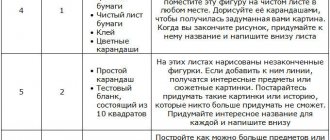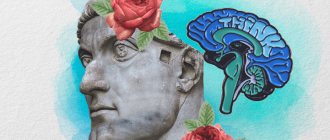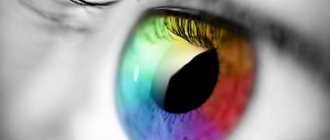Creativity in the modern world
Modern society is involved in the processes of market globalization and increased competition. You need to quickly respond to changes, apply non-standard solutions, and generate new original ideas. Society needs unusual solutions to familiar problems, new approaches to solving known and seemingly studied problems, as well as new ways of behaving in typical situations. Most professions in the modern world require creativity and the activation of creativity. Creative thinking manifests itself in the modern socio-economic system in various forms. These include scientific discoveries, entrepreneurship, technical inventions, the creation of works of art, relationships with people, and public administration.
Synthesis of forms using the CRAFT methodology
The field of application of the CRAFT (Creative Algorithm Framework & Tools) method is social forms of relationships. They refer to any models of interaction between people. Typically, such interactions are built stereotypically: when going to the theater, entering a business incubator, or going to a music festival, we imagine in advance what awaits us there and how we will interact with others.
The point of CRAFT is to reinvent these interactions, deconstruct them into elements, and then place those elements into a new context.
For example, you want to come up with a restaurant concept where customers will come in evening wear. Evening wear is a form of relationship. Let's break it down into elements: in what cases do people dress this way? Theatre, gala concert, Oscar ceremony. Putting these elements into the context of a restaurant: how can you make going to a restaurant feel like going to a theater or attending a ceremony? Cultural program, themed events, etc. Now the restaurant is no longer just a “catering establishment”, but something more.
Development of creative thinking
The author of the bestseller “The Birth of a New Idea,” American researcher E. De Bono, successfully worked on the problem of developing creative thinking. He developed a comprehensive program for the development of creative thinking and identified the following basic principles:
- Determining the conditions for solving a problem that are necessary and sufficient to achieve the goal.
- Willingness to abandon previously gained experience in solving similar problems.
- Improving the ability to notice multifunctional, universal things.
- Connecting a variety of different, even opposing ideas from a variety of fields of knowledge and using the resulting associations to solve problems.
- Improving the ability to understand the prevailing idea in a given field of knowledge, so as not to fall under its influence.
The formation of creative thinking presupposes, firstly, the unity of logic and thinking; secondly, the unity of positivity, harmony and productivity. The third necessary component is the joy of self-development.
We can identify a number of skills without which one cannot achieve success in the modern world, but which, fortunately, can be developed in oneself. They can be learned:
- Ability to think logically.
- Ability to formulate assumptions.
- The ability to find logical connections between phenomena, objects, facts.
- Ability to overcome stereotypes.
- Ability to make decisions in atypical, new situations.
- Ability to find the necessary knowledge and suitable methods.
Amaystyle T.M. identified three main elements of creativity:
- competence (availability of knowledge base, experience, skills);
- creative thinking (use of creative thinking methods, ingenuity, flexibility, perseverance;
- motivation (internal and external). Intrinsic motivation is personal interest in solving a problem, a persistent desire to apply knowledge, and self-realization. External motivation - career advancement, financial interest.
Technologies and techniques of creative thinking
There are different creative thinking technologies that allow you to effectively generate ideas. Let's look at some of them:
1. “Six Thinking Hats” by Edward de Bono (you can read more about it and other techniques in our article Literal Thinking.
This technology of creative thinking is good, for example, when conducting any discussion. It is ideal for group work, but also suitable for individual use. This technique helps control thinking and switch it. The bright colors of the hats make each of them distinguishable, noticeable, and help set thoughts in the right direction. The technique of putting on a hat for “mental digestion” helps to find inner peace and unhindered concentration on solving a problem: after all, putting on and taking off a hat is not a problem. Such a technique as putting on hats of different colors, each of which corresponds to a certain angle of view, helps to get away from unnecessary disputes and negative emotions and reach agreement. Parallel thinking structures the decision process. This technology of creative thinking develops, regardless of the age of the participants, tolerance, critical thinking, and creative thinking.
2. Brainstorming. This technique allows for the collective discovery of new ideas. Its goal is to obtain the maximum number of different ideas. The generation of ideas and their criticism are divided in time, and the participants in the creative process are divided into idea generators and critics. Voiced ideas are developed through the use of associations and are transformed and modified. Varieties of this creative thinking technology are “Pirate Meeting”, “Shadow Brainstorming”, “Reverse Brainstorming”.
3. “Method of focal objects” . In this technology, new ideas allow us to find a method of attaching signs or properties of randomly selected objects to a given object. Unusual, unusual combinations are obtained through the use of free associations. This method is known as the TRIZ tool (the theory of inventive problem solving).
4. "Synectics" . The main technique of creative thinking in this technique is the construction of analogies. Analogies evoke associations, which in turn stimulate creativity.
At the 1st stage of this technology of creative thinking, analogies serve to clearly define and understand the essence of the problem by participants. Obvious solutions should be consciously abandoned. During the subsequent specially organized discussion, the main contradictions and difficulties that hinder the solution are identified. New formulations of the task are determined and goals are set. After this, with the help of questions that evoke analogies, a process of searching for new ideas and solutions occurs. If there is a need for repeated discussion and development of ideas, then the problem is returned to again.
5. “Method of garlands of associations.” The main method of creative thinking in this technology is the combination of several stages of working with random words and associations:
- Constructing chains of object synonyms.
- Random choice of words (nouns in the nominative case).
- Combining each element from the synonym garland with each of the random words.
- Selection of several adjectives for each of the elements of a random choice of words (see 2)). This is how garlands of features are obtained.
- A combination of elements of garlands of synonyms and garlands of signs. Already at this stage, interesting ideas for solving a creative problem may be born.
- Free associations are selected for each element of the garland of attributes. There should be as many garlands of free associations as there are elements in the garland of attributes. The tool for forming garlands of free associations is the question “what does the word... remind us of?” In this case, each answer becomes the starting point for the next question. For example: “What does the word blue remind you of?” - “About heaven.” - “What does the word sky remind you of?” - “About the plane.” “What does the word airplane remind you of?” - “About wings.” Thus, the words sky, airplane, wings, ... will appear in the garland.
- Next, each of the elements of the garland of synonyms is combined with elements of the garlands of free associations, which gives new ideas for solving the problem.
- Analyzing the ideas received and making a decision to continue or stop the search. If the search needs to be continued, then the initial free associations are combined with secondary garlands, and their elements are combined with elements of the garland of synonyms. As a result, new ideas may arise.
- Ideas are divided into rational, interesting and unsuitable. Interesting (that is, good, but with shortcomings) are subsequently again divided into rational and unsuitable.
6. “Little Men Method” ..One of the technologies of creative thinking is the “Little Men Method”. There are problematic situations in which part of the object cannot fulfill the requirements of the task. In this case, such a creative thinking technique as breaking the problem into many “tiny people” can help. To do this, they single out that part that does not obey the conditions of the task, cannot fulfill them, and represents it in the form of little people. The next stage is dividing the little men into groups that act according to the conditions of the group’s task. The resulting model is then examined and rebuilt so that the conflicting actions can be performed. In other words, if the perceived problem as a whole seems insoluble, then when it is divided into its component parts, it may turn out that these parts can be regrouped and then combined in any order. As a result, either the problem will become solvable in a new way, or a new way of looking at it will arise, or some ideas can be modified in some direction to obtain a solution. It is advisable to move and combine elements obtained by division with each other in various combinations. Just remember that the combination of elements is not a monolithic system.
7. “Method of control questions.” The main technique of creative thinking in this technology is the use of correctly posed leading questions that will help direct the train of thought in such a way as to better understand the essence of the problem, conditions, and solutions. This will help overcome psychological inertia.
8. “Morphological analysis” The main technique of this method is the use of special tables, which show all the main components of the object of interest. The method allows you to streamline the process of analyzing different options for solving the problem at hand; it helps not to lose sight of any successful solution option that has not been noticed before.
9.. There are also methods for breaking stereotypes and other technologies of creative thinking, which use a variety of techniques that stimulate going beyond patterns and help creatively solve a variety of problems in various areas of our lives.
SCAMPER equipment
This method, created by Robert Eberle in 1997, allows you to go over the main issues; it is not for nothing that its name is translated from English as “fast running”. In the abbreviation SCAMPER, each letter represents one of the options for working on a problem. The better the development, the more opportunities for improvement and development open up.
- Substitute. Replace something, such as components, materials or people.
- Combine. Combine with other functions or devices.
- Adapt Add new elements or features.
- Modify/Magnify (modification, increase). Change size, shape, color or other attribute.
- Put to Other Uses (use otherwise). Use for something else for which the item is not normally used.
- Eliminate. Remove parts, simplify to the main thing.
- Rearrange/Reverse (change order). Swap, flip, find a use for something opposite.
Your idea doesn't have to be unique: when Steve Jobs announced the first iPod, portable players already existed in the world. But no one will remember their names now. Apple was able to outperform its competitors because its business model and value proposition were better. In addition to the fashionable device, it provided a huge and open music library (Combine).
Creativity and Creativity
Creative thinking is often also called creative, but creativity and creativity are not the same thing. For a better understanding of the processes, it makes sense to clarify the wording: creativity is always the creation of something new through insight: the receipt of some product of mental activity, in which the emotional and personal qualities of the creator are manifested. Many researchers call creative action uncontrollable, an unconscious act, or unstimulated brain activity, which manifests itself in the desire to get out of the “comfort zone” (Bogoyavlensky D. B.). The act of creativity is characterized by suddenness, spontaneity, which... Knitted with external circumstances and personal experiences.
Creativity is the ability to create, which is characterized by a readiness to generate unusual ideas and solve problems, while going beyond generally accepted patterns. Creativity is one of the independent factors of giftedness. Creative thinking relies on inventive art and discoveries in various fields of knowledge. It breaks stereotypes, boldly combines the incongruous, relies on algorithms and on this basis creates something completely new or solves seemingly unsolvable problems. Without creativity, creativity is impossible. Creativity can be called a technology for organizing the creative process. A creative person can get ahead of the creative process, giving it direction, but does not always accompany it.
Thus, creativity is one of the features of creative thinking. Creativity is always primary, but creativity allows you to achieve a specific goal. A major component of the creative thinking process is some pragmatism. This means understanding at the initial stage a specific goal (why you need to create it), purpose (for whom it is needed), a solution path (how to do it), and, in fact, the subject (what is needed for this).
If creativity plays a decisive role in the process of generating creative ideas, then their perception and implementation depend on cognitive abilities. Thanks to the plasticity of the brain, we can develop our cognitive abilities, train thinking, memory, attention and perception. Regular exercises on online brain simulators can be of great help with this.
We sincerely wish you creative discoveries and good luck and, of course, success in self-development.
What is it really like? A little about the work of a marketer and copywriter
For some time, this stereotypical image of the advertiser remained in force and was even fueled by other films and books about advertising. And even now, it is quite likely that if you say that you work in the field of advertising, many ordinary people will imagine you in the process of inventing the next cool idea for a radio commercial.
Meanwhile, the range of professions in marketing and advertising has expanded significantly, as has the range of opportunities, tools and tasks. Now it’s becoming more and more difficult to imagine an ordinary marketer thinking about the next masterpiece slogan - especially for those who know this area from the inside.
The work of marketing specialists has become more routine: we deal more with analytics, data, sales accounting services and advertising budgets, and less and less time is allocated to creative tasks.
Of course, in agencies and companies involved in bringing new brands to the market, creativity is still largely present in the work - this is an industry of branding and creative copywriting, where it is easy to find creators working on the next script or name.
But a marketer from an average Russian company or a copywriter who works on texts for websites or social networks encounter creativity less and less often.
The requirements to be down to earth, to focus on data from reports and statistics on the target audience, slowly but surely drive our brain into a kind of tunnel through which it is easier and faster to move towards the goal.
That's why we see unremarkable advertisements so often. And that is why we devote less and less time to developing new advertising ideas for promoting the company, preferring already “proven” methods and advertising phrases.
But this is definitely not useful for a profession such as a marketer or copywriter. So today I will try to inspire you to develop your creative abilities and tell you about ways to “stir up” your brain.










